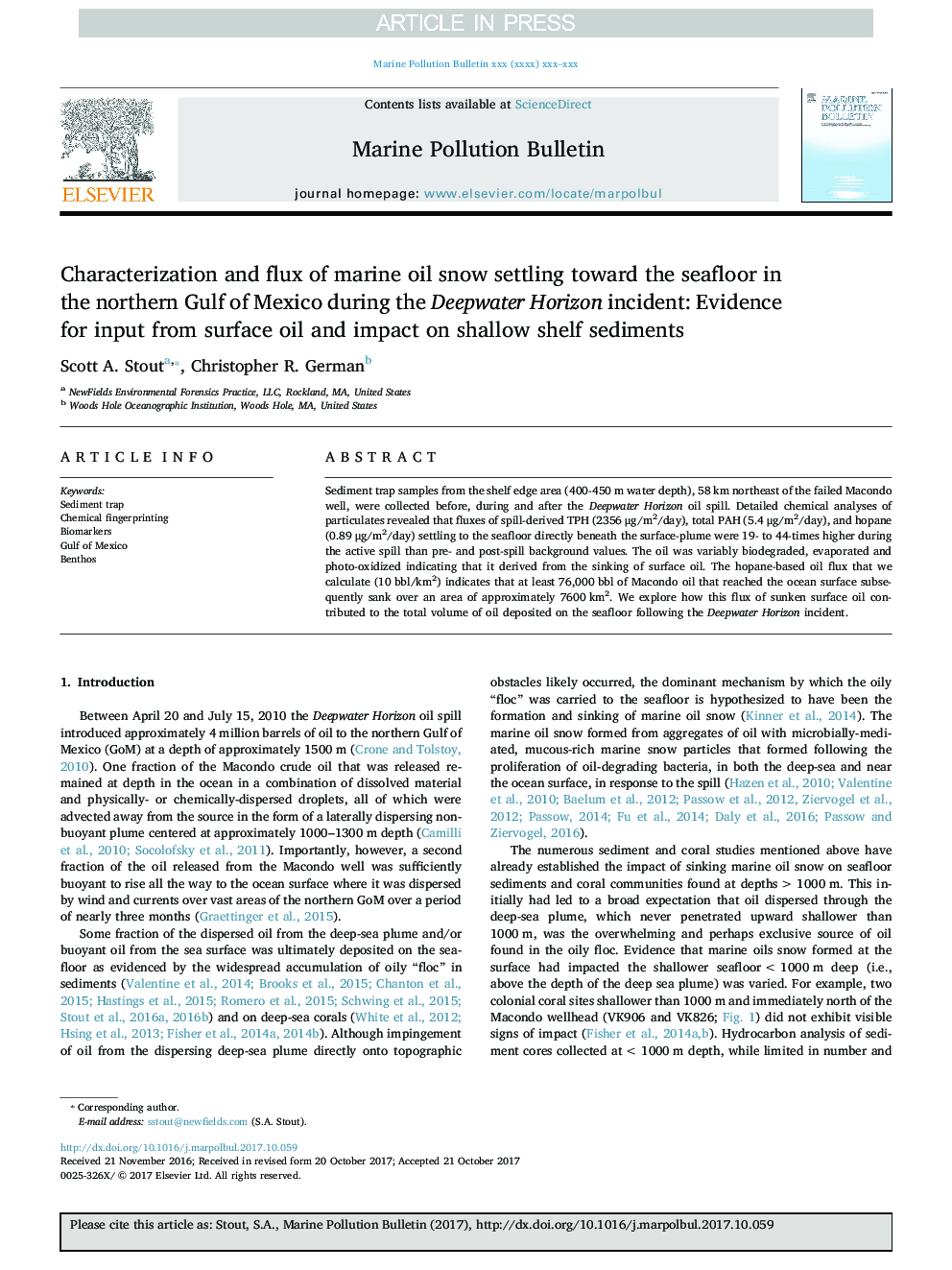| Article ID | Journal | Published Year | Pages | File Type |
|---|---|---|---|---|
| 8871365 | Marine Pollution Bulletin | 2018 | 19 Pages |
Abstract
Sediment trap samples from the shelf edge area (400-450 m water depth), 58 km northeast of the failed Macondo well, were collected before, during and after the Deepwater Horizon oil spill. Detailed chemical analyses of particulates revealed that fluxes of spill-derived TPH (2356 μg/m2/day), total PAH (5.4 μg/m2/day), and hopane (0.89 μg/m2/day) settling to the seafloor directly beneath the surface-plume were 19- to 44-times higher during the active spill than pre- and post-spill background values. The oil was variably biodegraded, evaporated and photo-oxidized indicating that it derived from the sinking of surface oil. The hopane-based oil flux that we calculate (10 bbl/km2) indicates that at least 76,000 bbl of Macondo oil that reached the ocean surface subsequently sank over an area of approximately 7600 km2. We explore how this flux of sunken surface oil contributed to the total volume of oil deposited on the seafloor following the Deepwater Horizon incident.
Related Topics
Physical Sciences and Engineering
Earth and Planetary Sciences
Oceanography
Authors
Scott A. Stout, Christopher R. German,
